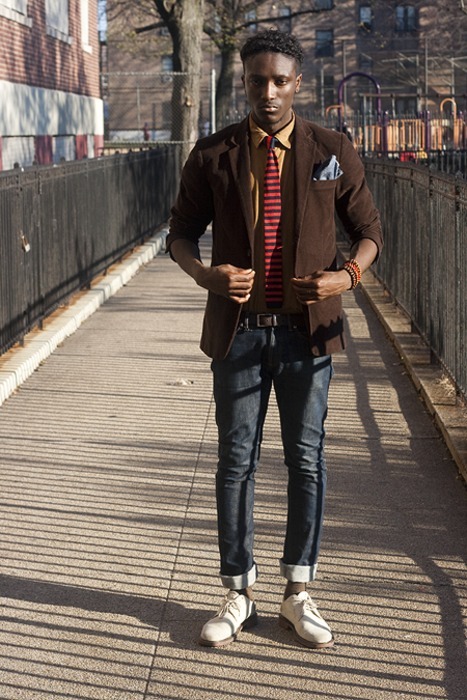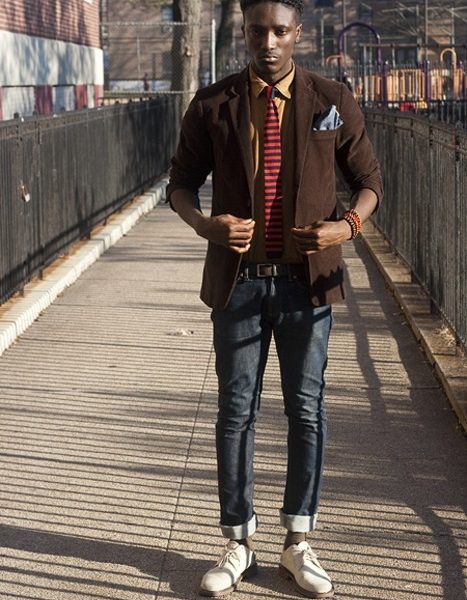
Liz writes: My boyfriend and I have been re-watching the last few seasons of Mad Men, and for all the fashion in the show to have questions about, we were most curious about the pocket square. There seem to be myriad ways to wear it, but we’re wondering if different folds suit different occasions or styles. What’s the deal?
After all but disappearing in the 1990s, the pocket square has returned full force, and we’re just pleased as punch about it. It’s a wonderful place to show a little taste and personality in an otherwise simple and uniform outfit.
The square can take a couple of forms, the simplest of which is plain white linen. The square’s origins are as a handkerchief, and this style is closest to those roots. A white linen square can be worn in almost any situation, in the breast pocket of almost any suit coat, sport coat or blazer. Our only advice: don’t use it to blow your nose. If you need one for that purpose (or for a lady’s tears), keep it in a pocket. White linen handkerchiefs are available at any decent men’s store, or online. Look for hand-rolled edges – they’ll be nice and round, rather than flat and hard. Colored or patterned linen is also perfectly appropriate, particularly in warmer months.
One step dandier than plain linen is silk. The variety of patterns and colors is immeasurable. Pick one out to compliment your clothes, not match them. No tie-and-handkerchief sets, unless you’re sharing a bill with Steve Harvey. Try colors that pick up the secondary colors in your outfit, like the check of a suit or the stripes on a shirt. Again, hand-rolled edges are a must. They should be full and plump.
There are as many ways to wear a pocket square as there are styles of silk square. Don Draper wears a TV fold – a white linen square folded so only a white line peeks above the pocket. This is appropriate for even very conservative business environments, but it can be a little dull, and won’t work with a silk square. Linen can also be folded to show one, two or even three points. Two is the middle path here, and most recommended if you want a precision folding job in your pocket. The folks at Sam Hober have how-tos on all of these.
Generally, though, there’s no need to fold. Pinch the center of your square, and let the points fall down below. Then adjust the length by folding so it fits neatly in your pocket. You can leave the “poof” out, leave the ends out, or even fold it roughly in half and put the poof behind the ends. Tug it into place as necessary, and go forth! Your goal should be to seem to say, “what this? It just happens to be there, and also to be spectacularly lovely.”
(above: JKissi from Street Etiquette rocks a square loudly and proudly)
